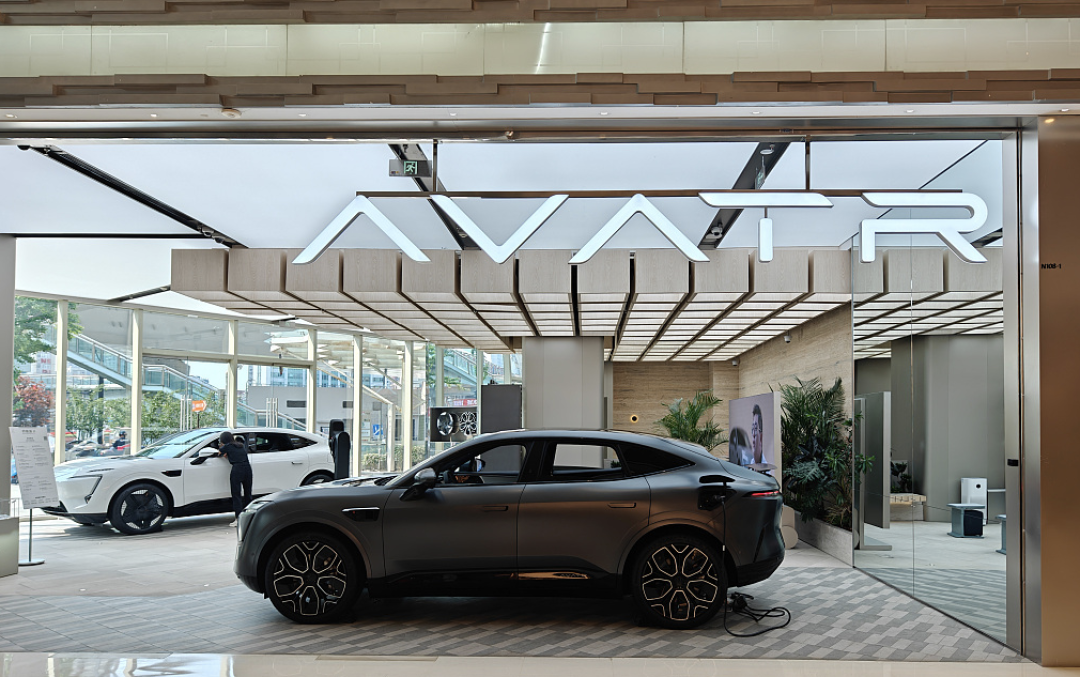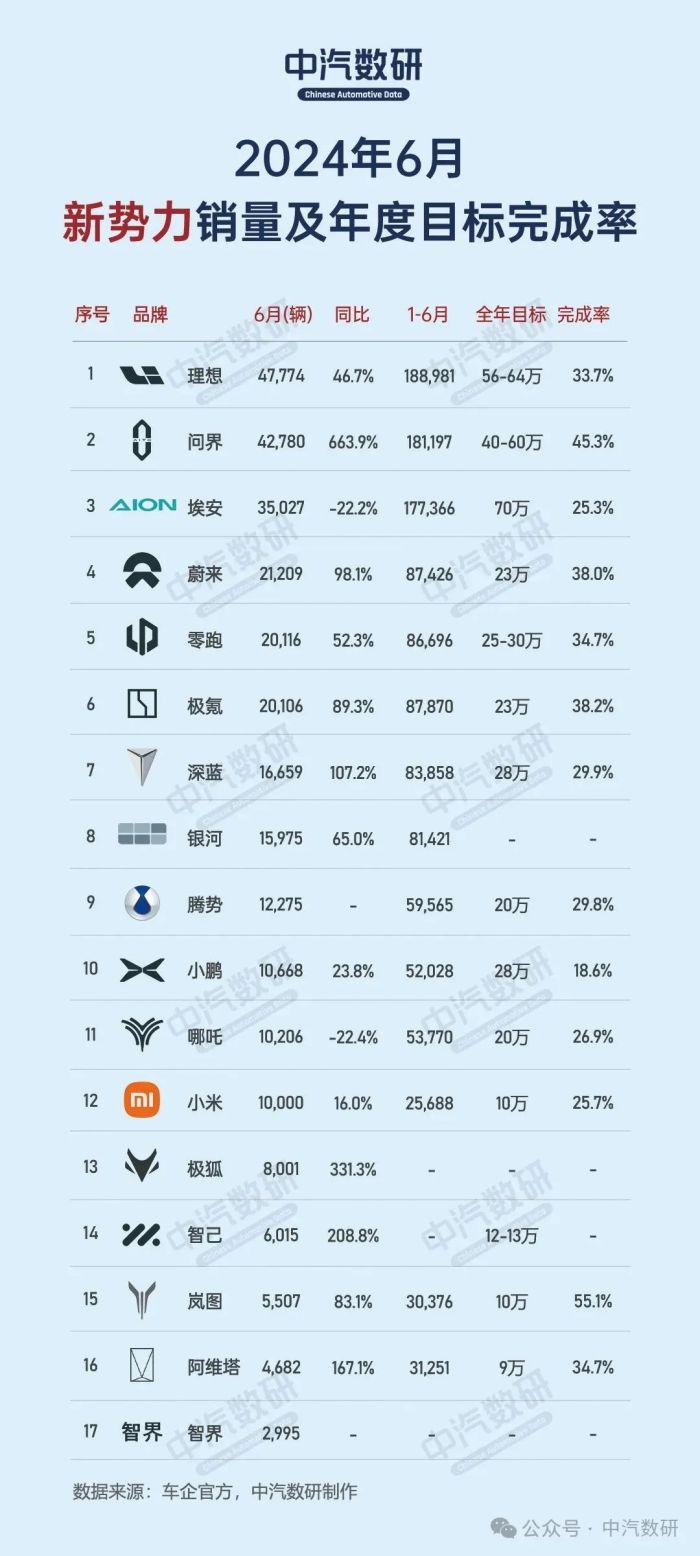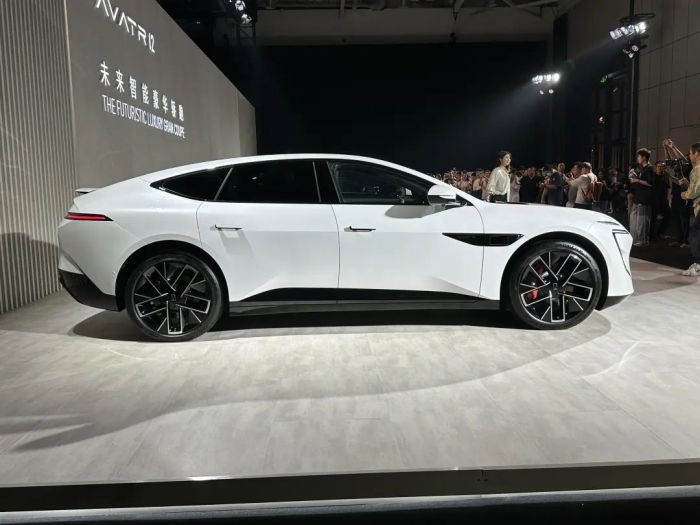In the second half of 2024, Avita closed its final direct-operated stores. On July 11, the company announced that all direct-operated stores in Beijing would transition to a dealership model. Previously, 90% of Avita’s stores had already made the switch, leaving only a few direct-operated stores in major cities like Beijing, Shanghai, Guangzhou, and Chongqing. An employee revealed that the store in Chaoyang, Beijing would also switch to a dealership model soon. Following the change, Avita’s terminal stores and sales staff would sign contracts with dealerships. Customers would now be served by the corresponding dealerships. Additionally, the employee mentioned that Avita had disbanded its self-operated after-sales service team earlier in the year, merging its after-sales service with sister brands like Deep Blue, managed by Changan dealerships nationwide. During the transition period, Avita implemented various stability measures. For example, employees at direct-operated stores would receive at least N+1 compensation upon leaving. Those who agreed to join the dealership system would also receive a six-month salary subsidy to ensure a smooth transition. Many employees reported that there had been no significant changes in sales policies or workflows after the transition. This smooth transition largely went unnoticed by end-users. An employee at one of the stores mentioned that most of the sales staff would join the dealership system, while he himself would continue to serve Avita. He noted that purchasing a car at a dealership now mirrored the experience at direct-operated stores, with orders placed through the Avita app and prices controlled by the company, resulting in no noticeable changes for customers. Despite the deliberate effort to maintain operational stability, the survival status of this 5-year-old brand was rapidly deteriorating.


Burning money for five years, joint venture twice, Avita struggles to continue its high-end brand dream. Established in July 2018 as a key move for Changan Automobile’s “third entrepreneurship,” Avita was originally a joint venture between Changan and Nio, but Nio’s strategic focus shifted, leading to the cooperation gradually fading. In 2020, Changan reintroduced Huawei and CATL, and completed its renaming in May 2021. Avita, under the support of multiple parties, not only carries the hope of Changan’s electrification but also has ambitions to move towards the high-end market. In November 2021, Avita’s first product, Avita 11, officially debuted, positioned as a high-end pure electric coupe SUV. Equipped with Huawei’s dual motors, three-in-one electric drive, and CATL’s highest 116-degree ternary lithium battery, the car comes with Huawei’s full-stack intelligent solution. Originally planned to be launched at the Beijing Auto Show the following year, the release was delayed to August 2022 due to the pandemic. The official starting price is between 349,900 and 409,900 yuan (56390$). A year later, at the Munich Auto Show, Avita unveiled its second product, Avita 12, which shares the same platform as Avita 11 and features a hatchback design. However, it is more extreme in terms of intelligence, with the vehicle equipped with three laser radars as standard, Huawei’s HarmonyOS cockpit 4.0, and Qiankun Intelligent Driving 2.0. Most physical buttons were removed. When it was launched in November 2023, the price ranged from 300,800 to 400,800 yuan (55140$). Avita also reached a development peak during the incubation process of these two products. From November 2021 to November 2023, in just two years, Avita accumulated four rounds of financing in the market, raising over 8 billion yuan. The post-investment valuation of Avita skyrocketed by billions within a year from the A-round financing when it went public in August 2022 to the B-round financing after the release of Avita 12 in August 2023. The performance of these two cars was disappointing. In 2023, Avita set a delivery target of 100,000 vehicles, but the actual number of new car deliveries was only 27,600, achieving just 27.6% of the annual delivery target. As a result, Avita’s net loss for the whole year increased by 83% to 3.69 billion yuan compared to the previous year. Since the restructuring in 2020, Avita’s accumulated net loss over the past four years has reached 6.07 billion yuan. Changan Automobile explained in its financial report that Avita is in a strategic investment period, with significant resources invested in product R&D, brand promotion, channel building, and the introduction of technical talents. For example, to create a high-end image, Avita has set up over 200 stores and employed over 1,400 salespeople in core business districts of major cities, following the example of new car-making forces like Tesla, NIO, and Li Auto. In Beijing alone, Avita has established 12 stores in core business districts such as Sanlitun, Zhongguancun, Yitigang, Olympic Center, Heshenghui, Century Golden Source, and Huaxi LIVE, with areas ranging from 200 to 400 square meters. The experience center on the first floor of the 3.3 building in Sanlitun is Avita’s first direct-operated store in Beijing, combining sales, delivery, and after-sales services, but the annual rent exceeds 40 million yuan. The high costs make it difficult for Avita to sustain itself, and the major shareholder Changan Automobile is facing financial difficulties due to its multi-brand strategy, coupled with the impact of price wars in the automotive industry, leading to a deteriorating overall situation. In 2023, Changan’s total sales volume increased by only 9% year-on-year, but its non-GAAP net profit fell by 15% to 3.78 billion yuan. In Q1 this year, Changan’s non-GAAP net profit further declined by 92% year-on-year to only 1.1 billion yuan.

State-owned enterprises place heavy emphasis on profits,” said marketing expert Gao Jiangtao, who has worked at many car companies such as BYD, Chery, and Zotye. Independent car companies lack experience and ability to build high-end brands. State-owned car companies are more cautious in resource allocation compared to new forces in car manufacturing. However, the direct sales model is too costly. Budgets are almost exhausted and the new brand’s ability to generate revenue is insufficient. “If Avita does not switch to a dealership model, its business situation will not improve,” he explained. In addition to burning money, the direct sales model brings significant management challenges to traditional car companies. Under the direct sales store model, each store’s staff performance and product procurement need to be centrally managed by headquarters. However, the inefficiency of decision-making in state-owned enterprises makes even buying a mop in the store difficult. All these factors determine that state-owned car companies find it difficult to sustainably explore the direct sales model. Especially when sales are blocked, transitioning from direct sales to dealership seems inevitable. Apart from Avita, as of now, many new brands with similar backgrounds such as SAIC Zhiji, Dongfeng Lantu, and GAC Aion have stopped expanding direct sales and have shifted to a mixed sales model of dealership or direct sales + dealership. Before, Avita used a mixed model of direct sales and distribution on the sales side, and had its own team stationed at dealer outlets to provide specialized services to car owners. In 2022, the ratio of direct sales to distribution stores was roughly 3:7. Starting in 2023, Avita attempted to further expand external forces. In February of the same year, Avita entered Huawei stores, and in July, signed contracts with more than 30 dealers at once. By the end of 2023, after continuous low sales, Avita saw personnel changes. Zhu Huarong, the head of Changan Automobile, personally took over as chairman of Avita. It was also around this time that Avita was rumored to be converting its direct stores into distribution stores. On May 17, Avita officially recruited sales and delivery forces in 18 cities including Hangzhou, Suzhou, and Nanjing. Zhu Huarong explained in a recent mid-year media communication meeting that when discussing product innovation and marketing model transformation today, three words are indispensable: reduce costs, improve efficiency, and optimize user experience. Currently, Avita is fully embracing these concepts. According to official disclosures, as of mid-June, Avita had completed the communication and conversion work for 115 main sales responsibility areas, 216 stores, and 1430 people. This time, with the launch of terminal store switching in Beijing and other first-tier cities, it means that Avita will shift from direct operation to distribution model.

Avita’s channel transformation fully embraces dealers but still struggles to reverse the decline? Will Avita’s situation improve by switching from direct sales to a distribution model, returning to a strategy more familiar to Changan Automobile? The answer seems not so simple. Data shows that with the help of dealers, Avita’s channel expansion speed has indeed increased. For example, in the second half of 2023 alone, Avita’s number of outlets increased by about 120, equivalent to 80% of all dealerships at the end of 2022. In April of this year, Avita announced plans to further expand by 120 outlets, with the total number expected to reach around 500 by the end of the year. However, terminal sales have not shown much improvement. In the first half of this year, Avita delivered 29,000 new cars, a 102% increase compared to the same period last year, but overall scale ranks at the bottom of the new forces list, even falling behind the just launched new brands, Xiaomi and iCAR. Despite lowering the sales target to 90,000 vehicles at the beginning of the year, the performance in the first half of the year is still less than 1/3. Rough estimates show that Avita’s average monthly sales per store are as low as 12 vehicles. A salesperson at a Beijing store, one of Avita’s best-selling stores nationwide, said that in the first week of this month, they only sold seven or eight vehicles, most of which were the higher value Avita 12. In comparison, the nearby Xiaopeng Motors, with a similar location and area, can deliver 80-100 vehicles per month.

This is related to the new distribution model adopted by Avita. Unlike Xiaopeng Motors, which also switched from direct sales to distribution, Avita uses an agency model. Dealers are responsible for store investment and operations. All customers must order and invoice through the official app. This allows for rapid store expansion and better control over prices and services. Dealers under the agency model do not need to spend a lot on inventory. The cost of trial and error is low, making it easy to expand sales networks quickly. Volkswagen was the first in China to use this model, later adopted by Geely for the Smart brand and spread to other independent car companies. However, this model is not a universal solution. For example, Great Wall’s Tank brand once tried a similar store model with dealers but it failed due to high costs and poor conversion rates. By the end of 2023, Great Wall decided to build its own sales model. On the other hand, Xiaopeng Motors briefly tried the agency model before switching back to traditional dealers who can hold inventory. Many industry insiders predict that Avita will gradually relax price controls and move towards a more traditional dealer model with Changan. However, this may not solve Avita’s dilemma. The key factor limiting Avita’s sales is its niche product positioning. Unlike Wenjie, Avita uses the Huawei HI model with designs by Changan. While the industry acknowledges the aesthetics under Changan’s direction, it may not appeal to mainstream users and remains niche. Not all niche products lack a market. For example, Jike, which also targets niche markets but with more appealing designs, has achieved five times the sales of Avita since its launch in the second half of 2022. In the first half of this year, Jike sold 54,568 units of its benchmark model, while Avita only sold 12,817 units, a difference of over three times.

Such a huge gap is not only due to differences in product definition, but also pricing strategies at play. For example, the initial starting price of the Avita 12 was 30.08 million yuan, while the Jike 001 started at 28.1 million yuan and gradually decreased to 26.9 million yuan after several modifications, but the Avita 12 remained unchanged, resulting in a price difference of 31,800 yuan (4380$). In terms of specific vehicle configurations, Avita also has many mysterious operations, causing many users to feel that Avita is not cost-effective. For example, despite a price difference of 30,000 yuan (4130$), the rear seats of the Avita 12 do not have features such as seat ventilation, heating, and massage like the Jike 001. In the same high-end smart driving model, Xiaopeng G9 is free, while Avita 11 requires an additional 18,000 yuan (2480$) for the option. At the same time, Avita’s energy supplement system is slightly inferior to other brands in the same class. Compared to competitors like Nio, Jike, Li Xiang, and Xiaopeng who have heavily invested in their own supercharging systems, as one of the earliest companies to adopt 800V technology, Avita mainly relies on Huawei for its energy supplement system. It wasn’t until March of this year that the two sides announced cooperation on the supercharging system, which significantly weakened Avita’s user experience. In addition to sharing energy supplement facilities, Avita also shares core technology with other Huawei-related car companies. For example, the existing Hongmeng car system and Qiankun smart driving system are also used in other car companies such as Wenjie and Zhijie. Gao Jiangtao believes that under the same selling points, Chang’an’s marketing capabilities are far inferior to Huawei’s. In the market, Avita under Chang’an’s leadership lags behind Wenjie and even Zhijie led by Huawei.
According to Avita’s sales forecast, the extended-range version will be priced significantly lower, with the Avita 12 extended-range version possibly priced between 200,000 to 300,000 yuan (41270$). “Extending the range is the most effective way to solve the sales dilemma for Avita,” Gao Jiangtao said, citing examples such as Zerun, Lantu, Chery, and even Changan Shenlan, many brands have seen their sales double after entering the extended-range market. He also mentioned Chery’s New Era as an example, stating that the pure electric version of this car simply didn’t sell, but the extended-range version was well received in the market. Avita will be no exception, as launching extended-range models will significantly boost the brand’s sales. In addition, Avita’s third new car, the Avita 07, is already on the road. According to the product filing information from the Ministry of Industry and Information Technology, this new car is positioned as a mid-size SUV, with dimensions of 4825mm×1980mm×1620mm, a wheelbase of 2940mm, slightly larger than the benchmark model Wanjie M5, and will offer both extended-range and pure electric power configurations, but all models will be equipped with lithium iron phosphate batteries. According to the plan, this car is expected to be launched in Q3 of this year, but the success of the new product strategy will have to withstand fierce competition.